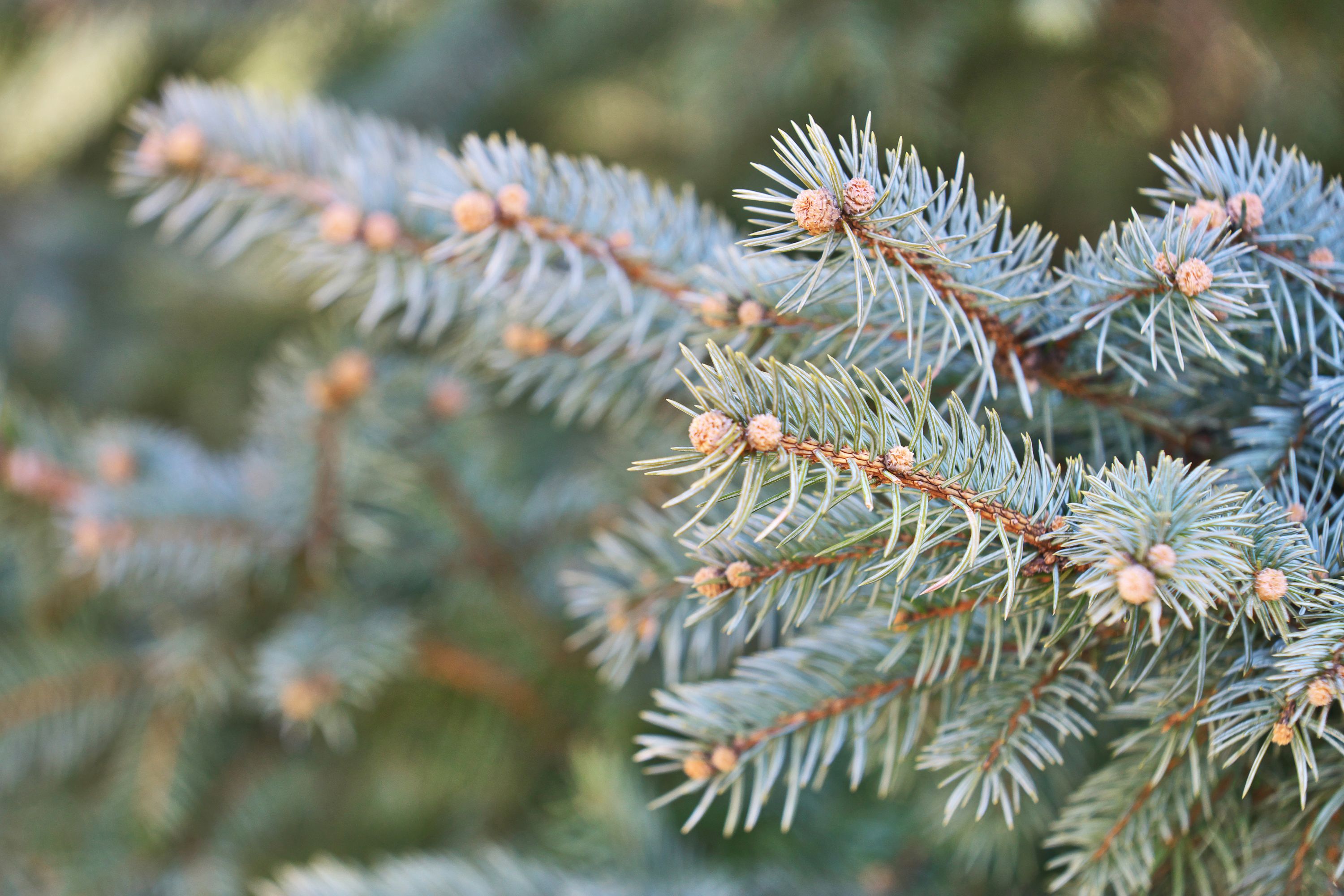Colorado spruce
(Picea pungens)

Description
The blue spruce (Picea pungens), also commonly known as green spruce, white spruce, Colorado spruce, or Colorado blue spruce, is a species of spruce tree. It is native to North America, and is found in USDA growing zones 1 through 7. It is found naturally in Arizona, Colorado, Idaho, New Mexico, Utah and Wyoming.It has been widely introduced elsewhere and is used as an ornamental tree in many places far beyond its native range. The blue spruce has blue-green colored needles and is a coniferous tree. In the wild, Picea pungens grows to about 23 m (75 ft), but when planted in parks and gardens it seldom exceeds 15 m (49 ft) tall by 5 m (16 ft) wide. It is a columnar or conical evergreen conifer with densely growing horizontal branches. It has scaly grey bark on the trunk with yellowish-brown branches. Waxy gray-green leaves, up to 3 cm (1 in) long, are arranged radially on the shoots which curve upwards. The pale brown cones are up to 10 cm (4 in) long. Male cones are found on the entire tree, whereas the female cones are found at the top of the tree. This helps to facilitate cross-pollination. The specific epithet pungens means "sharply pointed", referring to the leaves. The blue spruce is the state tree of Colorado. The blue spruce is attacked by two species of Adelges, an aphid-like insect that causes galls to form. Nymphs of the pineapple gall adelgid form galls at the base of twigs which resemble miniature pineapples and those of the Cooley's spruce gall adelgid cause cone-shaped galls at the tips of branches. The larva of the spruce budworm eat the buds and growing shoots while the spruce needle miner hollows out the needles and makes them coalesce in a webbed mass. An elongated white scale insect, the pine needle scale feeds on the needles causing fluffy white patches on the twigs and aphids also suck sap from the needles and may cause them to fall and possibly dieback. Mites can also infest the blue spruce, especially in a dry summer, causing yellowing of the oldest needles. Another insect pest is the spruce beetle (Dendroctonus rufipennis) which bores under the bark. It often first attacks trees which have blown over by the wind and when the larvae mature two years afterwards, a major outbreak occurs and vast numbers of beetles attack nearby standing trees.
Taxonomic tree:







